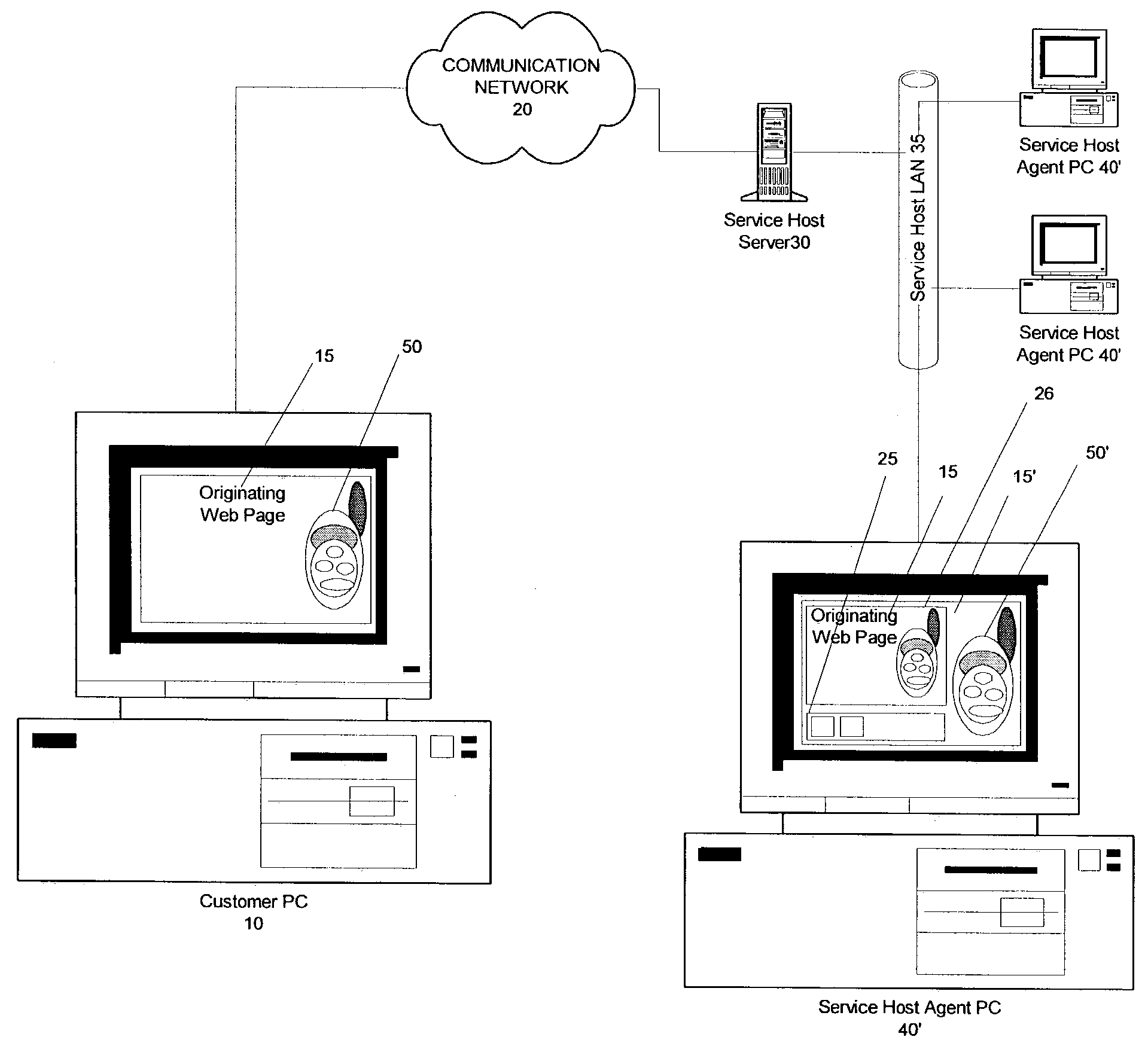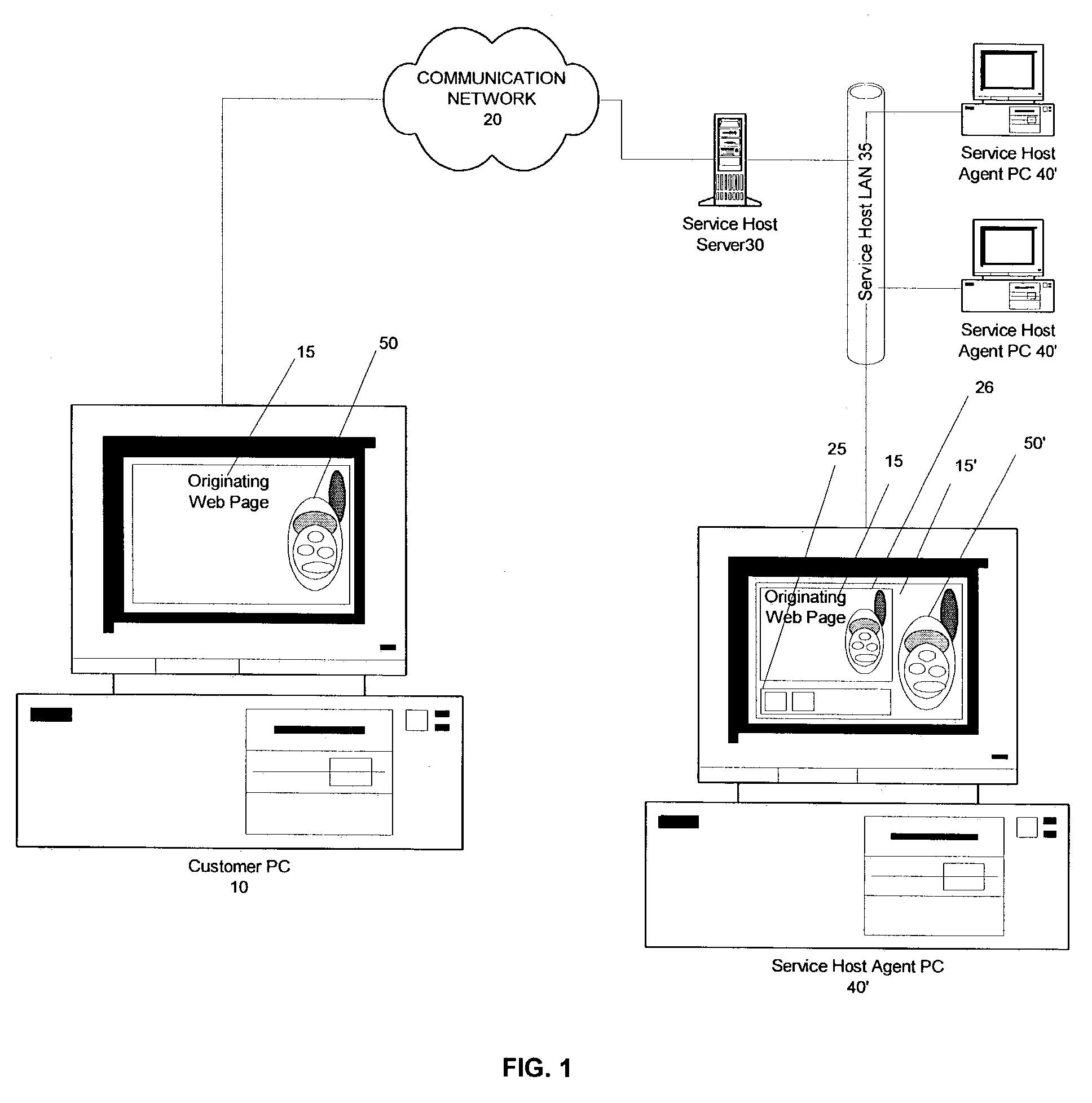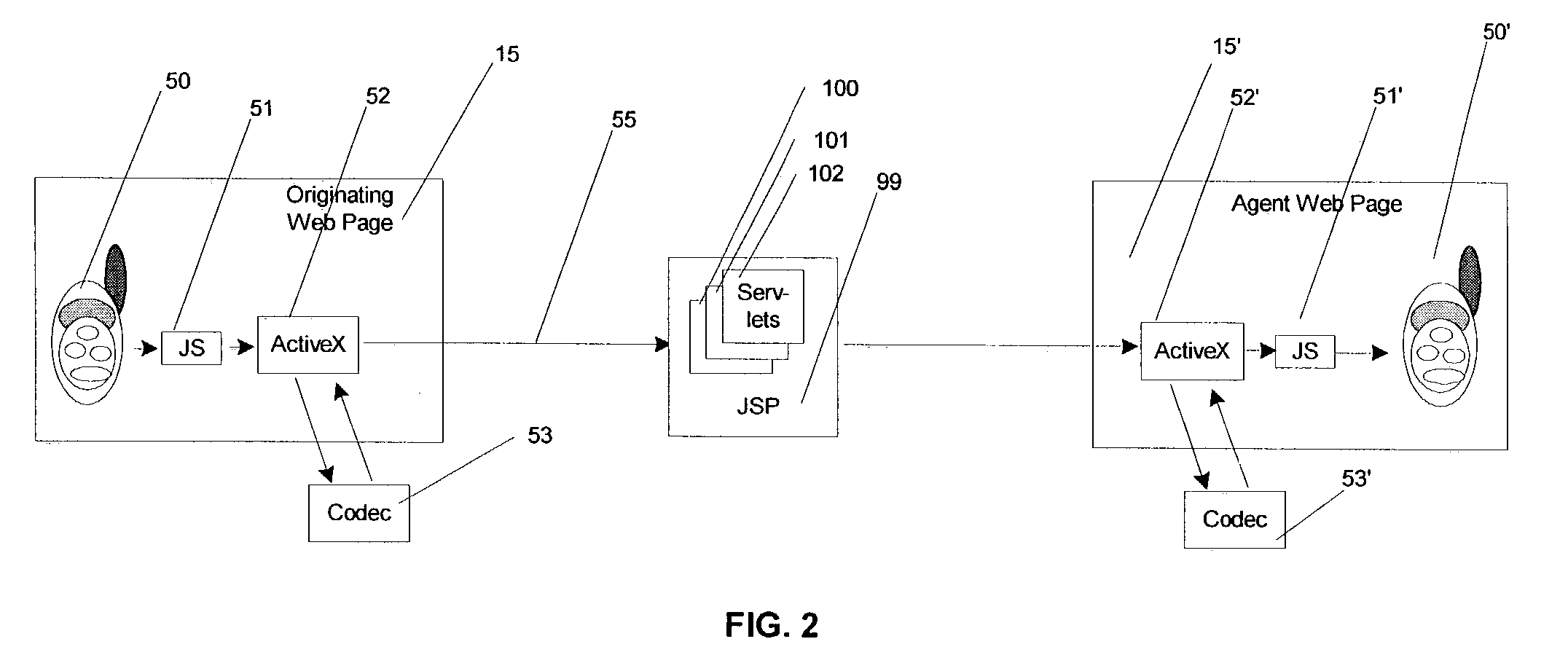Audio message driven customer interaction queuing system
a customer interaction and queuing system technology, applied in the field of software systems, can solve the problems of affecting the customer's expectation for timely service, each of these methods, and unsatisfactory voice interaction support, and achieve the effect of dramatic increase in voice fidelity
- Summary
- Abstract
- Description
- Claims
- Application Information
AI Technical Summary
Benefits of technology
Problems solved by technology
Method used
Image
Examples
Embodiment Construction
[0079]Turning now descriptively to the drawings, in which similar reference characters denote similar elements throughout the several views, the attached figures illustrate an audio / voice message driven customer interaction queuing system, which comprises client, server and agent elements.
[0080]By way of introduction, this discussion refers to 3-party and 2-party service models. In a 3-party model, a server brokers interaction between Users and Agents. In a 2-party model, User-Agent interaction occurs directly.
[0081]From the overall service level, the preferred 3-party service architecture functions in the following manner: A User visiting a blurt-enabled website creates an audio message using the Blurt Client (FIG. 1, 10, 15, 50). The user then sends the message using the Blurt Client (FIG. 1, 50) to the Blurt Server (FIG. 1, 30). The Blurt Server then determines availability and selects an Agent (FIG. 1, 40′) to field the message, and distributes the message to the Agent. The Agen...
PUM
 Login to View More
Login to View More Abstract
Description
Claims
Application Information
 Login to View More
Login to View More - R&D
- Intellectual Property
- Life Sciences
- Materials
- Tech Scout
- Unparalleled Data Quality
- Higher Quality Content
- 60% Fewer Hallucinations
Browse by: Latest US Patents, China's latest patents, Technical Efficacy Thesaurus, Application Domain, Technology Topic, Popular Technical Reports.
© 2025 PatSnap. All rights reserved.Legal|Privacy policy|Modern Slavery Act Transparency Statement|Sitemap|About US| Contact US: help@patsnap.com



